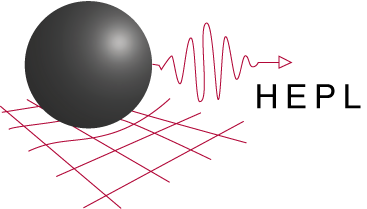News & Events
HEPL-KIPAC Seminar
Thursday, August 12, 2010
Remo Ruffini
Professor of Theoretical Physics
Sapienza University of Rome, Italy
Black holes in Gamma-Ray Bursts,
Binary X-ray sources and Active Galactic Nuclei
Abstract: Gamma Ray Bursts are possibly the most important tools to study the Physics of Black Holes (BHs), evidencing instantaneous BH formation occurring at the highest redshifts. Such processes of BH formation with distinctive processes of electron-positron pair creation by vacuum polarization are expected to be different from the ones observed in nearby binary X-ray sources (Cygnus X-1, GX339-4, 4U 1543-47, XTE J1550-564, XTE J1650-500, H 1743-322 and XTE J1859-226). These last ones should in fact originate from precursors activity acting on much longer time scales, due to accretion mechanisms.
We have studied high redshift GRB sources within the fireshell model to infer some of the properties of the BHs from which they originate. Here we present, as an example, the analysis of GRB 050904, characterized by a redshift z=6.3 and an isotropic energy release of E iso = 1.04 x 1054 ergs, and of GRB 090423, characterized by z=8.1 and E iso = 3.4 x 1053 ergs. We have searched for low redshift GRB sources having similar properties: same energetics, similar light curve structure, intense optical emission.
The "twin sources" of these two bursts have been identified in GRB 080319B (z=0.937) and GRB 090618 (z=0.54) respectively. For both pairs of GRBs the numerical simulations that best reproduce the observational data have been obtained by assuming the same initial total energies E{tot}_{e+ e-} and baryon loadings B of the electron-positron plasma originating the GRB, as well as the same commoving spectral energy distribution.
However, we had to assume different values of the average CircumBurst Medium (CBM) number density <n cbm >. This could indicate that the two sources of each pair have a similar baryonic progenitor, but occurred in different environments. Our analysis points to a drastic difference between these BHs originating GRBs and the ones occurring in Active Galactic Nuclei, which are in the range of 106 -109 solar masses. A viable approach based on the Dark Matter component versus the baryonic component is being developed and will be outlined.
Bio: Remo Ruffini is Professor of Theoretical Physics at the University of Rome "Sapienza" since 1978. He is President of the International Centre for Relativistic Astrophysics (ICRA) and initiated the International Relativistic Astrophysics Ph.D (IRAP) a common graduate school program of several universities and research institutes for the education of theoretical astrophysicists. In addition, he created an international network in which a number of states decided to collaborate in the field of astrophysics (ICRANet).
Time: 4:00pm – 5:30pm
Location: Physics and Astrophysics Conference Room 102/103
Light refreshments available 4:15pm; Presentation begiins 4:15pm.
Open to All


